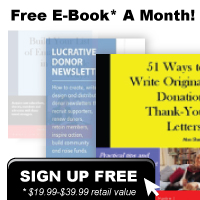 By Billy Sharma
By Billy Sharma
One of the hardest things to do in direct marketing is to get the recipient to open your direct mail package, therefore, the outer envelope is of prime importance. Its function is more than just holding the contents securely; it must entice the respondent to I open it.
Siegfried Vogele, a research professor of direct marketing, observed that the average person spends between five and fifteen seconds scanning their mail, screening and rejecting what to open, what to discard or what to save for later, all in the proximity of their wastebasket.
If your direct mail piece never gets opened, your message never gets read. So how do you ensure that your piece survives? Here are some simple yet effective ways to ensure that your direct mail piece is opened:
The first thing that goes through a recipient’s mind is WIIFM. What’s-in-it-for-me” Why is this company writing to me? What do they want from me? Remember, you are intruding on someone’s time, so make sure the piece has some relevance to the recipient. Otherwise you are just producing junk mail.
Provide a hint of what’s inside. Partially revealing the contents through a window can be exceedingly effective. Many books have suggested this, but the most conclusive evidence is a piece of research that tested two envelopes.
One had simply the words ‘Free Book Inside’. The other had a large window that partially revealed an actual book with the same words, ‘Free Book Inside’. The envelope that revealed the book out pulled the other by 30%.
Clear polybags display the entire contents. Polybags are great for mailing unique offers, posters or several booklets or multiple pieces. Publishers and catalogues use polybags extensively.
Capture the reader’s imagination. Remember that if the reader can decipher what you are selling without even opening the envelope, then it is a bad envelope. The bad envelopes do not reveal everyt5hing-they only tantalize you to look inside.
Use teaser copy. Teaser copy can arouse curiosity and interest, either by using a provocative statement or by asking a question. The teaser can be a partial one to lead the recipient inside or it can be split on the front and back of the envelope. If it is enticing, the recipient will flip it over to get the complete message.
When targeting a very select group, the message should be meaningful to the audience. For example, “Your copy of a report on osteoporosis” is more likely to be opened by someone concerned with osteoporosis.
————————————————————–
Excerpted from The Handbook of Direct Marketing for Non-Profit Organizations, by Billy Sharma. Available in paperback from www.expertfundraiser.org



